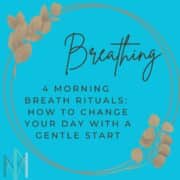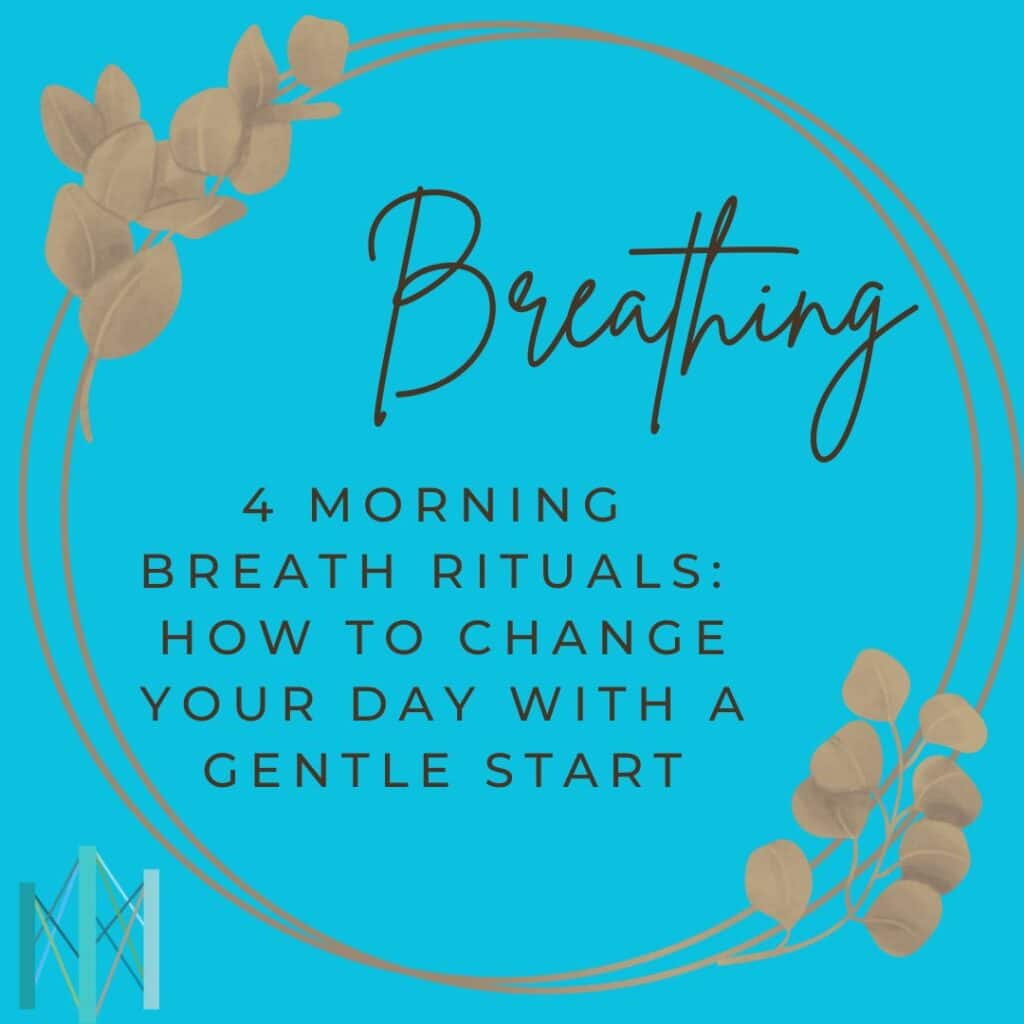

How we begin our morning shapes the tone for the rest of the day. For many of us, mornings feel rushed—waking up to alarms, scrolling through notifications, and mentally running through a to-do list before even stepping out of bed. But what if, instead of diving into the chaos, we started with something simple yet profoundly grounding?
Breathing.
Morning breath rituals are a way to transition from sleep to wakefulness with intention, awareness, and calm. By bringing attention to the breath first thing in the morning, we can reduce stress, increase focus, and set a steady foundation for the day ahead.
Breathwork is more than just a tool for relaxation—it is a doorway to deeper awareness of ourselves. In therapy, breath is used to help clients regulate emotions, process trauma, and reconnect with their bodies in moments of distress. By cultivating a morning breath practice, we create space for clarity, emotional balance, and self-awareness. And for those who find it difficult to slow down or who feel overwhelmed by their emotions, working with a therapist can help bridge the connection between breath and deeper healing.
Why Start Your Morning with Breathwork?
The breath is one of the most powerful tools for regulating the nervous system. While breathing happens automatically, conscious breathwork activates relaxation, presence, and focus. In therapy, breath is often used to help clients return to their bodies, calm anxious thoughts, and regulate emotions.
Morning breath rituals can:
- Reduce morning stress and anxiety – Before reaching for your phone or thinking about the day’s obligations, breathing helps settle the nervous system.
- Increase mental clarity and focus – Oxygenating the brain upon waking sharpens cognitive function.
- Balance energy levels – Certain breath techniques awaken the body, while others create a sense of calm and ease.
- Regulate emotions – Breath connects us to our emotional state, offering a natural way to process and release tension.
- Create a mindful start to the day – A few intentional breaths in the morning establish a foundation of presencerather than reactivity.
For those experiencing chronic stress, anxiety, or past trauma, breath awareness can be challenging. This is where therapy can help. Many therapeutic approaches, including mindfulness-based therapy, somatic therapy, and trauma-informed modalities, use breath as a tool to help clients safely connect with their inner experiences. If you find it difficult to breathe deeply or notice that certain breath techniques bring up discomfort, working with a therapist can offer guidance, support, and deeper healing.
4 Morning Breath Rituals to Try
Not all breathwork is the same. Some techniques are designed to energize while others calm and center. Below are different breath rituals you can incorporate based on how you want to feel in the morning.
While breathwork is beneficial for many, some people may find certain techniques bring up discomfort or even anxiety, especially if they have a history of trauma or struggle with breath-related distress. If a practice feels overwhelming, it’s okay to modify it, slow down, or skip it altogether—honoring your own comfort and needs is the most important part of the process.
1. Deep Belly Breathing (Grounding & Centering)
Best for: Easing into wakefulness, reducing stress, and cultivating a sense of calm.
How to do it:
- Upon waking, place one hand on your belly and one on your chest.
- Inhale deeply through your nose, allowing your belly to expand.
- Exhale slowly through your mouth, feeling your belly soften.
- Repeat for one to three minutes, focusing on the sensation of breath moving in and out.
Why it works: This activates the parasympathetic nervous system (rest and digest mode), helping to reduce stress and promote relaxation. Many therapists use this breath technique with clients experiencing anxiety or PTSD to bring them back to the present moment.
2. The 4-7-8 Breath (Calming & Restorative)
Best for: Relieving tension, balancing emotions, and promoting a slow, intentional start.
How to do it:
- Inhale through the nose for four counts.
- Hold the breath for seven counts.
- Exhale slowly through the mouth for eight counts.
- Repeat for four rounds.
Why it works: This breathwork slows the heart rate and activates deep relaxation, making it ideal for easing morning anxiety. In therapy, this technique is often recommended for clients who struggle with panic attacks or racing thoughts.
3. Breath of Fire (Energizing & Awakening)
Best for: Boosting energy, increasing mental alertness, and shaking off grogginess.
How to do it:
- Sit up straight and take a deep inhale.
- Begin rapid, rhythmic exhalations through the nose, engaging the lower belly (like blowing out candles quickly).
- Continue for 30-60 seconds, then return to normal breathing.
- Repeat two to three rounds if desired.
Why it works: This breath stimulates circulation, oxygenates the brain, and increases alertness. Some therapists use this breath in somatic therapy sessions to help clients release stuck energy or emotional blockages.
Note: Avoid this breath if you have high blood pressure, are pregnant, or feel dizzy.
4. Alternate Nostril Breathing (Balancing & Centering)
Best for: Creating a sense of calm focus, balancing emotions, and relieving tension.
How to do it:
- Use your right thumb to close off your right nostril.
- Inhale through your left nostril, then close it with your ring finger.
- Exhale through the right nostril, then inhale through it.
- Close the right nostril, exhale through the left.
- Continue this cycle for one to three minutes.
Why it works: This breathwork balances the left (calm) and right (active) hemispheres of the brain, helping to reduce stress while promoting alertness. Many mindfulness-based therapists incorporate this technique to help clients find balance between emotional and rational thought.
Breathwork and Therapy: Deepening the Practice
Breathwork is a powerful tool for self-regulation, but in therapy, it becomes even more than that—it becomes a pathway to deeper awareness, healing, and transformation. Working with a therapist can help you understand your breath patterns, explore how they relate to your emotions, and use breathwork in a way that supports your unique needs.
In therapy, breath is not just about relaxation; it is used to:
- Increase self-awareness by noticing how breath shifts in response to different emotions.
- Provide grounding and stability during difficult conversations or when processing trauma.
- Develop tools for emotional regulation, using breath to calm, energize, or center in real time.
- Work through patterns of breath-holding that may be linked to stress, anxiety, or past experiences.
- Create a bridge between mind and body, helping individuals reconnect with their physical sensations and inner wisdom.
Many people breathe in shallow, restricted ways without realizing it, reinforcing patterns of stress and tension. A therapist can help identify these patterns, offer guidance on breath techniques that align with your needs, and provide a safe space to explore emotions that may arise.
While breathwork on its own is a wonderful practice, therapy offers insight, support, and structure, allowing breath to become a tool not just for daily well-being, but for lasting emotional and psychological growth. If you’re interested in exploring breathwork more deeply, working with a therapist can be a powerful next step.
Ready to take your breath practice deeper?
Connect with one of our therapists today.





